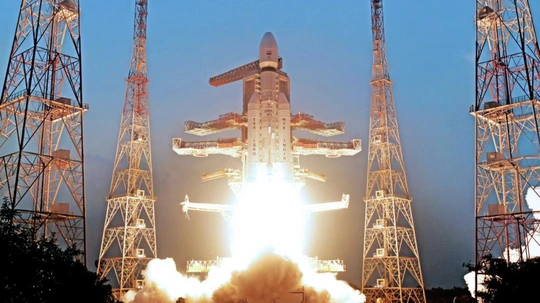India took a significant step toward strengthening its maritime communications network with the launch of GSAT-7R, the country’s heaviest dedicated defence communications satellite, from the Satish Dhawan Space Centre earlier this month.
The satellite, weighing about 4,400 kg, will bolster the Indian Navy’s secure, real-time communications and maritime domain awareness across the Indian Ocean Region (IOR) – a theatre where China has expanded its military footprint in recent years.
The launch comes six months after Operation Sindoor, the four-day military offensive in May that saw the Indian armed forces targeting terrorist infrastructure deep within Pakistan. During the conflict, China helped Pakistan with space-based intelligence, as per reports.
Weighing approximately 4,400 kg, GSAT-7R is equipped with numerous indigenous, state-of-the-art components specifically designed to meet the operational needs of the Indian Navy.
“In an era of complex security challenges, GSAT-7R represents the Indian Navy’s determination to protect the nation’s maritime interests by leveraging advanced technology through Aatmanirbharta (self-reliance),” stated the Defence Ministry.
What’s GSAT-7R?
The satellite will enhance connectivity with high-capacity bandwidth, enabling secure real-time communication between naval ships, aircraft, and submarines across IOR, upto 2,000 kms from India’s coastline.
It will enabl blue-water operations – i.e., sustained naval presence far from Indian shores.
The satellite will support network-centric warfare, where all naval assets operate as a unified information network.
Why It Matters
India is expanding maritime surveillance and response across the Indian Ocean Region (IOR).
GSAT-7R will offer higher bandwidth, better encryption, and greater coverage than its predecessor.
Enhances interoperability with the upcoming P-75I submarine fleet, carrier groups, and maritime drones.
China’s Military Satellite Fleet Now over 1,000
China has rapidly developed advanced anti-space capabilities like direct-ascent anti-satellite missiles, co-orbital satellites, electronic warfare systems, and high-powered directed energy weapons such as lasers designed to deny or degrade another nation’s access to space.
From just 36 in 2010, China’s military satellite fleet has expanded to over 1,000 by 2024, including around 360 satellites dedicated to intelligence, surveillance, and reconnaissance (ISR) missions, according to a Times of India report.
Integrated Defence Staff chief Air Marshal Ashutosh Dixit, speaking at a seminar in June, emphasised the need to expand India’s “surveillance envelope” and underscored the importance of “real-time situational awareness” in military operations.
“We must detect, identify and track potential threats not when they approach our borders, but when they are still in their staging areas, airfields and bases, deep within an adversary’s territory,” he said, according to TOI.
Referring to China’s April 2023 decision to establish the People’s Liberation Army (PLA) Aerospace Force, Air Marshal Dixit said the move is evidence of Beijing’s recognition of space as the “ultimate high ground” in modern warfare.
“Their satellites have recently demonstrated sophisticated ‘dogfighting’ manoeuvres in LEO [low Earth orbit], practising tactics designed to track and potentially disable adversary space assets. They have evolved from a ‘kill chain’ to a ‘kill mesh’ – an integrated network that seamlessly interweaves ISR satellites with weapon systems,” Air Marshal Dixit added.
